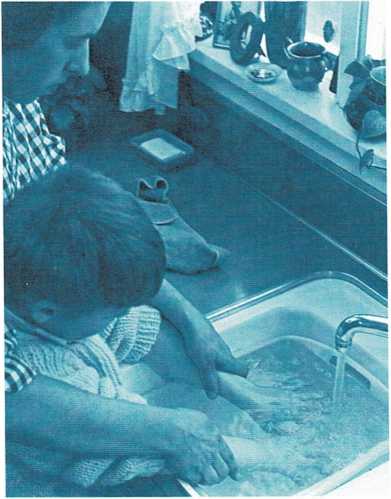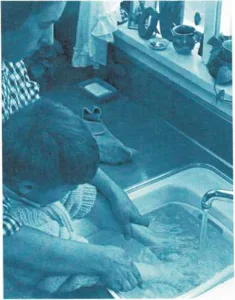Frostbite
Frostbite results when the body is exposed to extreme cold. It
usually occurs in the ears, fingers, nose, and toes. The immediate
effect of frostbite is that the frostbitten area becomes whitish and
numb. This occurs because the blood and moisture in the tissues freeze
and circulation is cut off. Further damage varies. The tissue of a
frostbitten finger may be completely destroyed. Or the child may
experience no more than a mildly painful burning sensation every time
the finger is exposed to cold, even months after the original injury.
If you think your child has frostbite, follow these procedures:
Consult a doctor as soon as possible.
Do not massage the frostbitten area, because you may damage the
tissues.Do not rub the frostbitten area with snow or ice, because you may
remove the skin and injure the tissues.Take the child indoors and let the frostbitten area warm gradually.
Do not apply hot pads, heating pads, or hot-water bottles.
Do not put the child close to a hot stove or under a heat lamp.
Soak frostbitten fingers or toes in lukewarm water (90° to 100° F.;
32° to 38° C). Apply warm (not hot), wet towels to frostbitten nose
or ears.If blisters occur, cover them with a bandage to protect them from
infection.
Frostbite can be prevented by following certain precautions.
Dampness increases the chance of frostbite, so teach your child to
come indoors to change wet or damp clothing, particularly mittens,
shoes, and socks.Be certain that ears, hands, and feet are adequately protected in
cold weather.The child should wear a protective face mask when ice-skating,
skiing, or otherwise exposed to the cold for a long time,
[m.g]
See also Blister
Fungus diseases. See Ringworm;
Thrush
Furuncle. See Boil

**If your child’s hands or feet become frostbitten, warm them
gradually by soaking them in lukewarm water.

